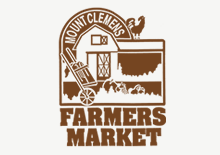Why Buy Local?
Real food tastes real (good!)
Food grown within your own community was likely picked with the past day or two. It’s crisp, sweet, and loaded with flavor. Produce flown in from other states or countries is, quite understandably, much older. Several studies have shown that the average travel distance for food to get to your plate is 1,500 miles. In a week-long (or more) delay from harvest to your table, sugars turn into starches, plant cells shrink, and produce loses its vitality. Get that young, fresh look (in your produce!) by buying local.
Chock full of nutrients
Local produce is healthier for you. A recent study showed that fresh produce loses nutrients quickly. Food that is canned or frozen soon after harvest is actually more nutritious than some “fresh” produce that has sat on the truck or supermarket shelf for a week. Locally grown food, purchased soon after harvest, retains its nutrients.
Bred as nature intended
When you buy local food, you are helping to preserve genetic diversity of that plant. In the modern industrial agricultural system, varieties are chosen for their ability to ripen simultaneously and withstand harvesting equipment; for a tough skin that can survive packing and shipping; and for an ability to have a long shelf life in the store. Only a handful of hybrid varieties of each fruit and vegetable meet those rigorous demands, so there is little genetic diversity in the plants grown. Also, many large factory-style farms grow genetically modified fruits and vegetables that are tasteless and watery, but can be shipped long distances. Local farms, in contrast, grow a huge number of varieties to provide a long season of harvest, an array of eye-catching colors, and the best flavors. Many varieties are heirlooms, passed down from generation to generation, because they taste good. These old varieties contain genetic material from hundreds or even thousands of years of human selection; they may someday provide the genes needed to create varieties that will thrive in a changing climate.
Mitigate our energy crisis
Because local food does not have to be trucked in hundreds of miles, petroleum consumption, carbon dioxide and other polluting vehicle emissions are reduced. One-fifth of all petroleum used in the United States is used in agriculture. By buying local, you can conserve the majority of energy used in shipping. Also, the large volumes of packaging materials usually needed to transport produce long distances are not used by local farmers.
Keep local dollars local – Support endangered family farms
With fewer than 1 million Americans now claim farming as their primary occupation, farmers are a vanishing breed. Commodity prices are at historic lows, often below the cost of production. The farmer now gets less than 10 cents of the retail food dollar.
Local farmers who sell direct to consumers cut out the middleman and get full retail price for their food – which helps farm families stay on their farms, doing the work they love. These farmers spend their money with local merchants. The money stays in town where it then benefits everyone and builds a stronger local economy.
Avoid overpaying the taxman
Farms contribute more in taxes than they require in services, whereas suburban development costs more than it generates in taxes, according to several studies. On average, for every $1 in revenue raised by residential development, governments must spend $1.17 on services, thus requiring higher taxes of all taxpayers. For each dollar of revenue raised by farm, forest, or open space, governments spend 34 cents on services.
The ties that bind
Local food builds community! When buying direct from a farmer, you are re-establishing a time-honored connection between the eater and the grower. Knowing the farmers gives you insight into the seasons, the weather, and how you get your food. In many cases, it gives children a chance to visit a farm and learn about nature and agriculture. Relationships built on understanding and trust can thrive.
Preserve open space
As the value of direct-marketed fruits and vegetables increases, selling farmland for development becomes less likely. You have probably enjoyed driving out into the country and appreciated the lush fields of crops, the meadows full of wildflowers, and the picturesque red barns. That landscape will survive only as long as farms are financially viable. When you buy locally grown food, you are doing something proactive about preserving the agricultural landscape.
Farmers: Green and Clean
A well-managed family farm is a place where the resources of fertile soil and clean water are valued. Good stewards of the land grow cover crops to prevent erosion and replace nutrients used by their crops. Cover crops also capture carbon emissions and help combat global warming. According to some estimates, farmers who practice conservation tillage could sequester 12-14% of the carbon emitted by vehicles and industry. In addition, the habitat of a farm - the patchwork of fields, meadows, woods, ponds and buildings - is the perfect environment for many beloved species of wildlife, including bluebirds, killdeer, herons, bats, and rabbits.
Secure the future
By supporting local farmers today, you can help ensure that there will be farms in your community tomorrow, and that future generations will have access to nourishing, flavorful, and abundant food. Set an example for your friends and family; make a conscious choice about your food.
Resources:
www.santafefarmersmarket.com/goodies/local
www.buylocalca.org/why.html
